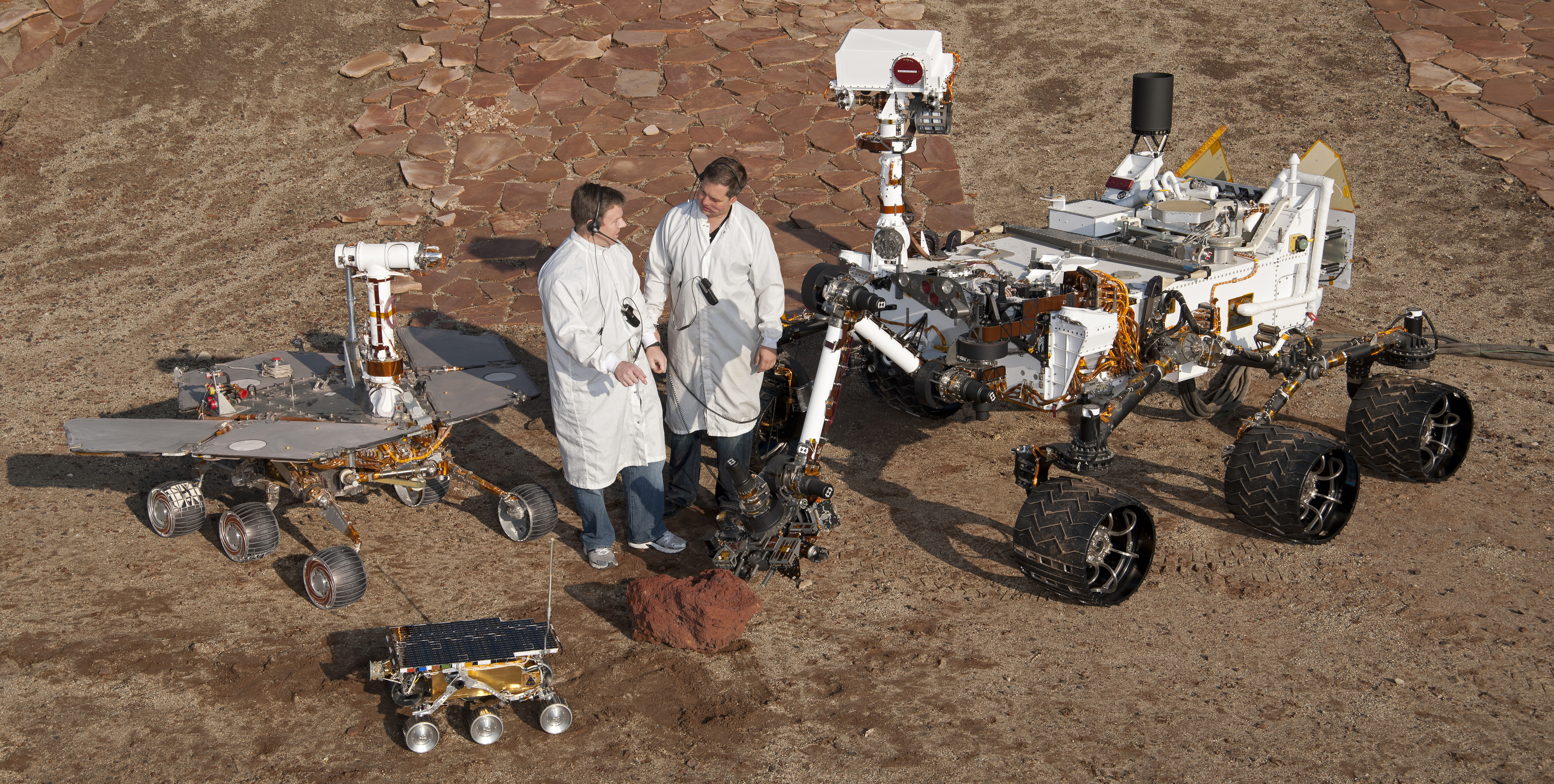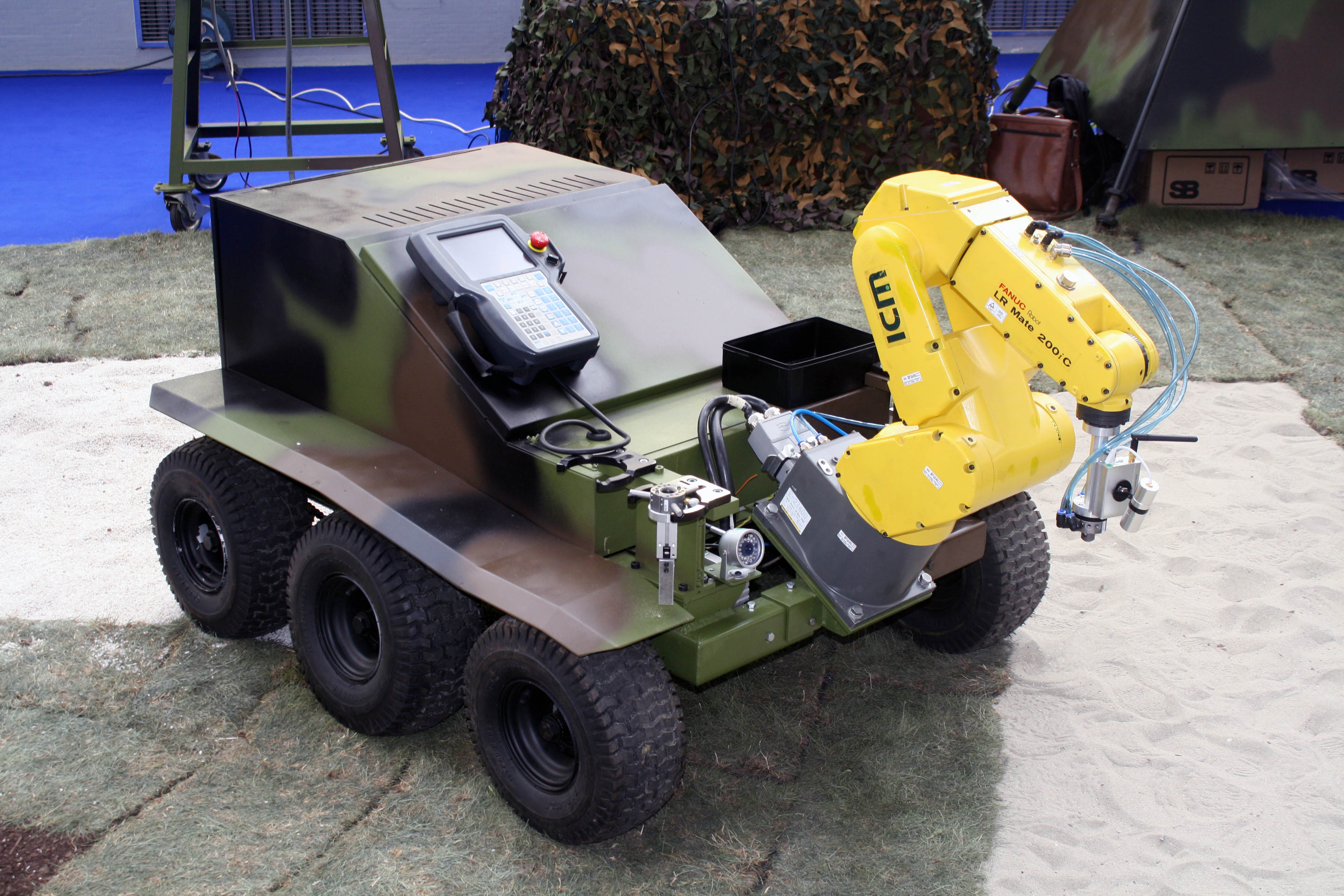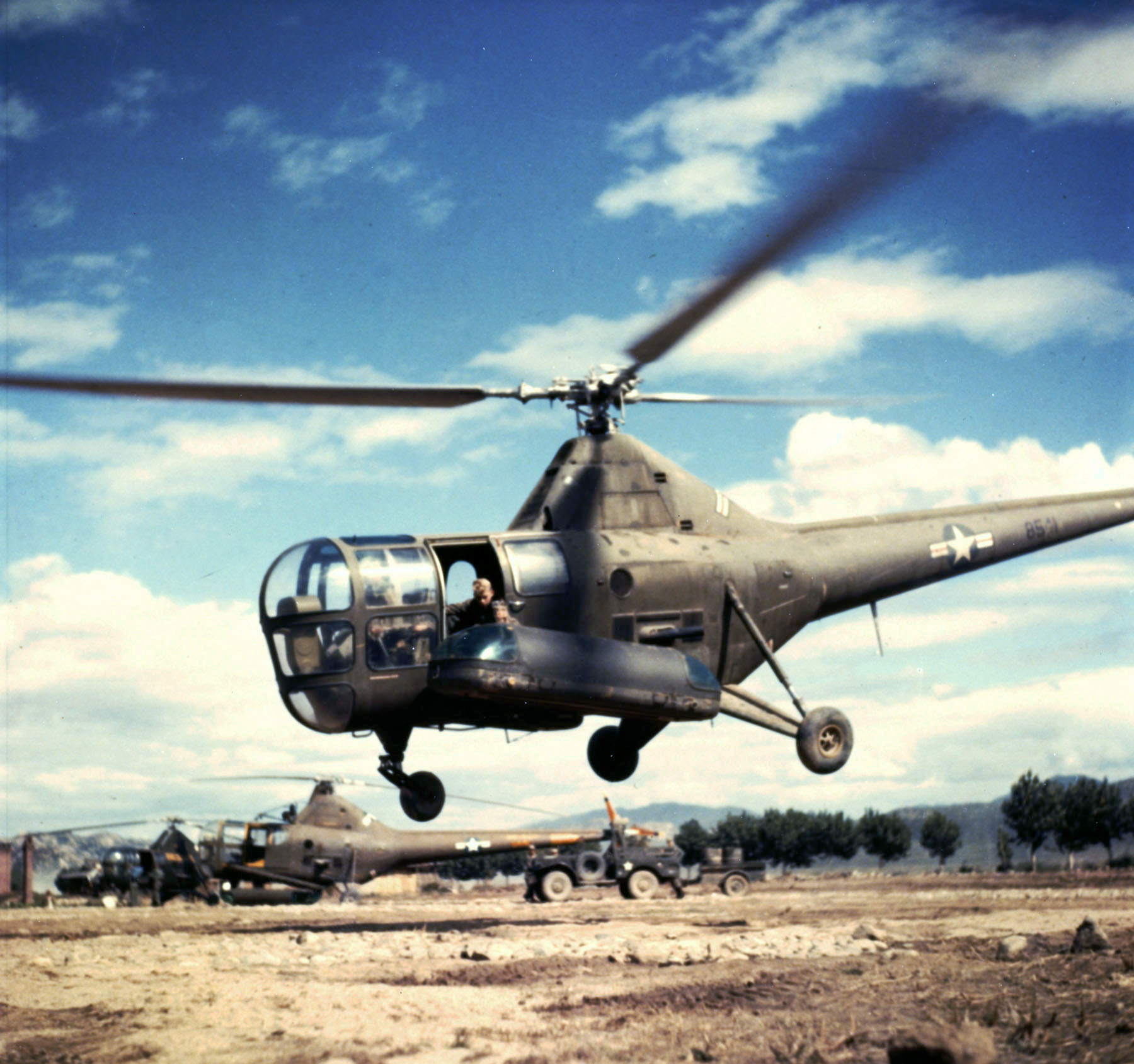|
Miloš (unmanned Ground Vehicle)
Miloš (; sr-Cyrl, Милош), also called Little Miloš (; ), is an unmanned ground vehicle (UGV) developed by the Military Technical Institute, following the development of the unmanned ground vehicle Milica in 2009. UGV Miloš is in serial production and its first customer is the Serbian Armed Forces. Overview In 2009, the Military Technical Institute presented its first battle UGV, Milica. Continuous development lead to a new UGV named Miloš. Miloš has improved autonomy and a smaller remote-control station that can be carried and operated by a single soldier. The UGV can fit into a small trailer and can be carried by smaller 4x4 military vehicles or in numbers on larger vehicles to the deployment zone. For surveillance and detection it uses a thermal camera, a day and night camera, and a laser ranger. It has one or two weapons attached to its turret. Maximum total weight is around or of cargo. Two day/night cameras are installed on the front and back for driving. It can ... [...More Info...] [...Related Items...] OR: [Wikipedia] [Google] [Baidu] |
Robotic
Robotics is the interdisciplinary study and practice of the design, construction, operation, and use of robots. Within mechanical engineering, robotics is the design and construction of the physical structures of robots, while in computer science, robotics focuses on robotic automation algorithms. Other disciplines contributing to robotics include electrical, control, software, information, electronic, telecommunication, computer, mechatronic, and materials engineering. The goal of most robotics is to design machines that can help and assist humans. Many robots are built to do jobs that are hazardous to people, such as finding survivors in unstable ruins, and exploring space, mines and shipwrecks. Others replace people in jobs that are boring, repetitive, or unpleasant, such as cleaning, monitoring, transporting, and assembling. Today, robotics is a rapidly growing field, as technological advances continue; researching, designing, and building new robots serve various pr ... [...More Info...] [...Related Items...] OR: [Wikipedia] [Google] [Baidu] |
Military Technical Institute
Military Technical Institute (; abbr. ) is a Serbian weapons and aircraft design institute, headquartered in Belgrade, and governed by the Ministry of Defence (Serbia), Serbian Ministry of Defence. It is a top-level military scientific research institution in Serbia, dealing with research and development (R&D) of new weaponry and military equipment as well as with upgrade of the inventory for both branches of the Serbian Armed Forces: Army (including River Flotilla) and Air Force and Defence. Institute history After the World War II, Federal People's Republic of Yugoslavia had a need to independently develop military technology and reduce dependence from foreign supply with given political situation of that time and future political course. By a decision of the Secretary of Defense and a proclamation by the Yugoslav president Josip Broz Tito, VTI was founded in 1948 as the Military Technical Institute of the Land Forces ( sr-Latn, Vojnotehnički institut Kopnene vojske; abbr. ) i ... [...More Info...] [...Related Items...] OR: [Wikipedia] [Google] [Baidu] |
PPT Namenska
PPT Namenska () is a Serbian manufacturer of arms, mortars, grenade launchers, unmanned ground vehicle, hydraulics and pneumatics, airplane parts and some complex weapons system including modernized M-77 Oganj, PASARS-16, and LRSVM Morava in various stages of production. There is also a production for civil and industries users. Its headquarters and main production facilities are located in the town of Trstenik. History Foundation "Prva Petoletka Trstenik" (PPT) was founded on 23 March 1949, by the Government of People's Federal Republic of Yugoslavia, at the beginning of the first five-year plan of development, after which it was named. It was planned to manufacture combat and training aircraft. But Josip Tito ordered in 1949 that about 150 most advanced factories and their production to be moved from Serbia to Bosnia and Herzegovina, Croatia and Slovenia under a pretext of a Soviet invasion that never occurred. Thus Prva Petoletka never produced a complete aircraft but only ... [...More Info...] [...Related Items...] OR: [Wikipedia] [Google] [Baidu] |
Zastava M84
The Zastava M84 is a general-purpose machine gun manufactured by Zastava Arms. It is a gas-operated, air-cooled, belt-fed and fully automatic shoulder-fired weapon. The M84 is a licensed copy of the Soviet Union's PKM, with a few differences such as a differently shaped stock, and a slightly longer and heavier barrel which has slightly different measurements at the gas port and forward of the trunnion in diameter. Variants M84 The M84 is intended for infantry use, against enemy infantry and light vehicles. It is also configured for tripod mounting (like the PKS). M86 The M86 is a tank machine gun, and is designed to mount as a coaxial weapon on M-84 tanks and other combat vehicles. The stock, bipod, and iron sights are omitted from this version, and it includes a heavier barrel and electric trigger, much like the Russian PKMT. Another version, the M86A, is designed for external mounts and can be used dismounted. M84M An improved version of the M84. The changes include a ... [...More Info...] [...Related Items...] OR: [Wikipedia] [Google] [Baidu] |
M90 Stršljen
The RBR-120 mm M90 (nicknamed ''Stršljen'', from ) is a light-weight, single-use, unguided anti-tank rocket launcher. The launcher is produced by Eurokompozit of Prilep, North Macedonia and Poliester of Priboj, Serbia, while the anti-tank rocket is produced by Sloboda of Čačak, Serbia. It is intended for use against tanks and other armoured vehicles in addition to fortifications and infantry. On impact, a piezoelectric impact fuse in the rocket triggers the shaped charge warhead, which can penetrate an equivalent of over of RHA. Design The M90 consists of a disposable rocket launcher and a HEAT In thermodynamics, heat is energy in transfer between a thermodynamic system and its surroundings by such mechanisms as thermal conduction, electromagnetic radiation, and friction, which are microscopic in nature, involving sub-atomic, ato ... projectile which is propelled by an impulse-type sustainer. Users * * * * * References External links M90 websit ... [...More Info...] [...Related Items...] OR: [Wikipedia] [Google] [Baidu] |
Unmanned Ground Vehicle
An unmanned ground vehicle (UGV) also known colloquially as armored robot (ARB) is a vehicle that operates while in contact with the ground without an onboard human presence. UGVs can be used for many applications where it is inconvenient, dangerous, expensive, or impossible to use an onboard human operator. Typically, the vehicle has sensors to observe the environment, and autonomously controls its behavior or uses a remote human operator to control the vehicle via teleoperation. The UGV is the land-based counterpart to unmanned aerial vehicles, unmanned underwater vehicles and unmanned surface vehicles. Unmanned robotics are being actively developed for both civilian and military use. History In 1904, Spanish engineer Leonardo Torres Quevedo was developing a radio-based control system he named ''Telekino''. He chose to conduct an initial test in the form of a three-wheeled land vehicle (tricycle), which had an effective range of 20 to 30 meters, the first known example ... [...More Info...] [...Related Items...] OR: [Wikipedia] [Google] [Baidu] |
Milica
Milica ( sr-Cyrl, Милица; pronounced 'Millitsa') is a feminine name popular in Balkan countries. It is a diminutive form of the given name Mila, meaning 'kind', 'dear' or 'sweet'. The name was used for a number of queens and princesses, including Milica of Serbia, wife of Tsar Lazar, who is honored as a saint in the Serbian Orthodox Church. Milica has been the most popular name for girls born in Serbia since 1991, and is overall the most common female given name in the country. The English version of the name is Milicent. The name of Princess Milica of Montenegro was often translated as Milizza in English language publications. Individuals named Milica * Milica of Serbia (1335–1405), Princess of Serbia, wife of Lazar of Serbia * Milica Despina (1485–1554), Princess consort of Wallachia, wife of Neagoe Basarab * Milica of Montenegro (1866–1951), Montenegrin princess * Milica Branković (died 1464), Serbian princess, wife of Leonardo III Tocco * Milica Čubrilo (born ... [...More Info...] [...Related Items...] OR: [Wikipedia] [Google] [Baidu] |
Charge Coupled Device
A charge-coupled device (CCD) is an integrated circuit containing an array of linked, or coupled, capacitors. Under the control of an external circuit, each capacitor can transfer its electric charge to a neighboring capacitor. CCD sensors are a major technology used in digital imaging. Overview In a CCD image sensor, pixels are represented by p-doped metal–oxide–semiconductor (MOS) capacitors. These MOS capacitors, the basic building blocks of a CCD, are biased above the threshold for inversion when image acquisition begins, allowing the conversion of incoming photons into electron charges at the semiconductor-oxide interface; the CCD is then used to read out these charges. Although CCDs are not the only technology to allow for light detection, CCD image sensors are widely used in professional, medical, and scientific applications where high-quality image data are required. In applications with less exacting quality demands, such as consumer and professional digital came ... [...More Info...] [...Related Items...] OR: [Wikipedia] [Google] [Baidu] |
Medical Evacuation
Medical evacuation, often shortened to medevac or medivac, is the timely and efficient movement and en route care provided by medical personnel to patients requiring evacuation or transport using medically equipped air ambulances, helicopters and other means of emergency transport including ground ambulance and maritime transfers. Examples include civilian Emergency medical services, EMS vehicles, civilian aeromedical helicopter services, and military air ambulances. This term also covers the transfer of patients from the battlefield to a treatment facility or from one treatment facility to another by medical personnel, such as from a local hospital to another medical facility which has adequate medical equipment. In Asia, according to Aeromedical Global (M) Sdn Bhd, medical evacuations via air ambulance can be performed via a single or dual stretched setup. According to patients medical condition, Emergency Air Ambulances will be equipped with relevant equipment (ventilators, ... [...More Info...] [...Related Items...] OR: [Wikipedia] [Google] [Baidu] |
Serbian Armed Forces
The Serbian Armed Forces () is the military of Serbia. The President of the Republic acts as commander-in-chief of the armed forces, while administration and defence policy is carried out by the Government through the Ministry of Defence. The highest operational authority, in-charge of the deployment and preparation of the armed forces in peace and war, is the General Staff. Military service is voluntary, though conscription may occur in wartime. Serbia is ranked 63 out of 145 countries considered for the annual GFP review. The Serbian Armed Forces consists of two branches: Serbian Army and Serbian Air Force and Air Defence. History Serbia has a long military tradition dating to early medieval period. The modern Serbian military dates back to the Serbian Revolution which started in 1804 with the First Serbian Uprising against the Ottoman occupation of Serbia. The victories in the battles of Ivankovac (1805), Mišar (August 1806), Deligrad (December 1806) and Belgrad ... [...More Info...] [...Related Items...] OR: [Wikipedia] [Google] [Baidu] |





